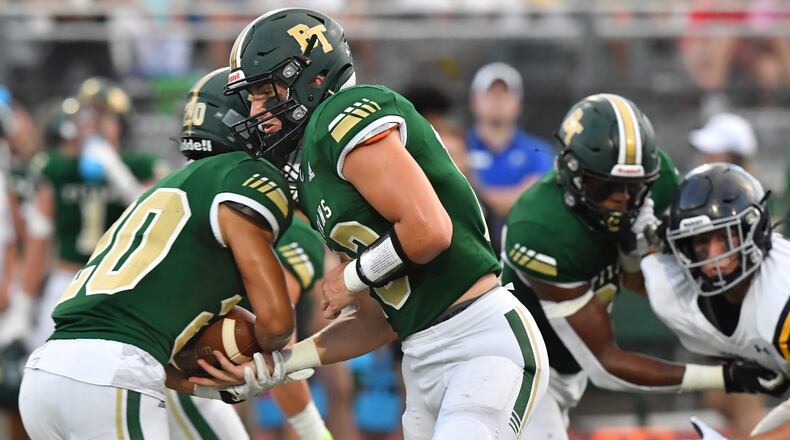Macon — Many of Georgia’s private schools and city schools could end up competing in higher classification next season if the GHSA’s executive committee signs off on the recommendation approved Sunday by the reclassification committee.
After a vigorous debate, the reclassification committee voted 14-5 to approve the plan to increase the out-of-zone multiplier from 2.0 to 3.0. Each student from outside the district at any GHSA member school would count as three students when the GHSA looks at attendance numbers later this month to determine classifications.
“What we have proven over the last two years is that what we’ve done does not work,” said GHSA president Glenn White. “And we’ve had domination by schools in our association, because they’re in certain classes, that did not work.”
The proposal will be voted on by the GHSA’s full executive committee on Monday, The rule would not have a limit on the number of classifications a school could be bumped by the multiplier, meaning a school could theoretically move up three or four classifications in competition.
The change in multiplier was done to offset any perceived competitive advantage held by city schools and private schools, who are not limited by geographical restrictions like county lines. Public schools argue the ability by those schools recruit out-of-district players gives them an edge, particularly in football.
The GHSA currently uses a 2.0 multiplier — a change that was instituted two years ago — to establish the classifications in which schools compete. GHSA members determined that number needed to be increased to further even the playing field.
“Two years ago we were wringing our hands about moving the multiplier to 2.0,” said Jim Finch, the principal at Mary Persons High School in Forsyth, who voted for the proposal. “I understand. This is something new. I get it. But that’s where we’re moving on for competitive reasons.”
The new rule could mean that city schools like Buford (Class 6A), Jefferson (Class 4A), Cartersville and Calhoun (both 5A) — the schools most often cited by others as the greatest beneficiaries of out-of-district students — would end up in high classifications. Private schools most likely to move up under a higher multiplier are Benedictine, Blessed Trinity, Greater Atlanta Christian, Marist, Pace Academy, Lovett, St. Pius, Westminster and Woodward Academy.
Individual schools would continue to have the option to appeal to compete in a lower classification. Two years ago there were 24 appeals and 17 were approved.
The private schools argued that it would not be safe for their students if their schools moved up and faced others with a larger student body.
“I’m very much against it for the safety of the kids,” said Savannah Christian School’s Julie Jones. “I can’t believe anybody, public or private, to want their teams to be jumped up to 7A or 6A when they have 700 students.”
The GSHA is expected to release the new region alignments by January. Those would be in effect for two years starting with the 2022-23 school year.
The Latest
Featured


